|
|
|

Matt Stead's Vietnam Rainforest Expedition
home/intro - vietnam rainforest research / frontier expeditions /donating - funding/charity events/links-contact/guest book
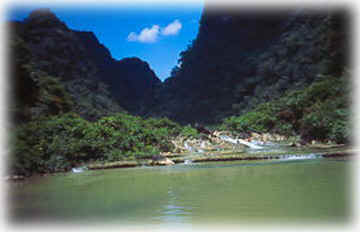 In Late June 2003 I will be taking part
in an expedition with a group of volunteers dedicated to the conservation of the
rainforest in Northern Vietnam. The 10 week expedition will be based in remote
areas of rainforest in Northern Vietnam and will involve the survey and study of
biological diversity in this ever decreasing ecosystem. I am taking part because
I feel that we have a duty to respect and protect the natural environment,
particularly in areas that have suffered the adverse effects of human activity.
I hope that my contribution in the field will be helpful in the collection of
data and that this information can be used to promote both the biological
richness of Vietnam and the need to save it.
In Late June 2003 I will be taking part
in an expedition with a group of volunteers dedicated to the conservation of the
rainforest in Northern Vietnam. The 10 week expedition will be based in remote
areas of rainforest in Northern Vietnam and will involve the survey and study of
biological diversity in this ever decreasing ecosystem. I am taking part because
I feel that we have a duty to respect and protect the natural environment,
particularly in areas that have suffered the adverse effects of human activity.
I hope that my contribution in the field will be helpful in the collection of
data and that this information can be used to promote both the biological
richness of Vietnam and the need to save it.
I also see this expedition as a great
opportunity for personal development. I will be spending 10 weeks as part of a
team of other volunteers and scientists, camping in a completely different
natural environment and experiencing a culture which is completely new to me. I
am 23 and graduated from the University of the West of England in 2000 with a BA
(Hons) certificate in Geography and Environmental studies. Since then I have had
two administration based jobs but have been keen to utilise my studies in a
positive way. As part of the expedition and a wider timescale I will also be
undertaking a level 3 BTEC Advanced certificate in Tropical Habitat
Conservation.
Below is a detailed explanation of exactly what is involved in the Vietnam Rainforest Expedition. The expedition is being arranged by Frontier Expeditions. For more information on the organisation click here. To visit their website see my section of links. I hope that you will find this website useful and interesting. I will be updating it regularly with forthcoming charity events and will be using it upon return from the field to host my diary of experiences in Vietnam, photos from the field and a study of what I have learnt.
Matthew Stead - March 2003
Vietnam Rainforest Expedition
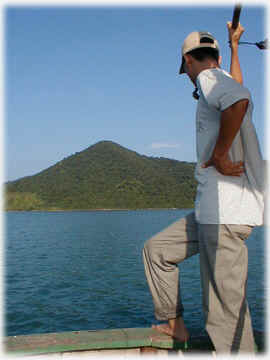 Background:
More than 85% of Vietnam's natural forest cover has been destroyed as a result of
the Vietnam War and through forest clearance agriculture. Today only 1% of the
existing natural forest remains pristine.
Background:
More than 85% of Vietnam's natural forest cover has been destroyed as a result of
the Vietnam War and through forest clearance agriculture. Today only 1% of the
existing natural forest remains pristine.
There is a growing appreciation of Vietnam's biological richness and an interest in it's conservation. The vietnamese government has recently established an extensive network of national parks and nature reserves, but these are not yet managed, The areas covered by these protected habitats is rich in species and has the highest levels of endemism in South East Asia. Vietnam supports many rare and threatened primate and bird species as well as several large Asiatic mammals including the new species of bovid, the Vu Quang Ox and cervid, the Giant Muntjac, which were recently discovered. The country also has a high diversity of plants, many of which are an important source of food, medicine and building materials for local communities.
There is however, little scientific documentation which validates the biological and ecological values of the protected areas. This is specifically mentioned in the Biodiversity Action Plan for Vietnam. This plan highlights the fact that more scientific data are needed so that the Vietnamese Government can identify the areas of highest biodiversity value. Socio-economic data are also required so that the Government can identify those forests which are most threatened and the means of reducing these threats. Once the biological and socio-economic data are available, the Government will be in a position to prioritise areas for conservation and to identify the types of research and conservation activities required in each area. Armed with this information the Government will be in a strong position to attract support and funding from international donor agencies.
Objectives: Established in
1993, Frontier-Vietnam works in collaboration with the Institute of Ecology and
Biological Resources (IEBR) and has clearly defined objectives: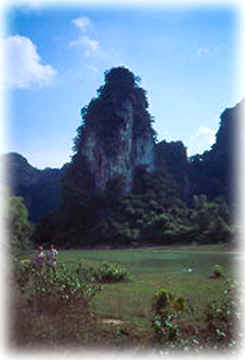
1. To conduct baseline biological research assessing the level of biodiversity and endemism by investigating key groups of flora and fauna e.g. birds, primates, small and large mammals, reptiles, amphibians and butterflies.
2. To identify the level and pattern of resource utilisation by local communities within the reserve.
3. To provide recommendations for the future sustainable management of these resources, and to develop a continuation strategy.
4. To build in-country capacity for research, ecological monitoring and conservation monitoring through the provision of UK technical expertise and the necessary operational resources required for the field training of Vietnamese personnel.
5. To strengthen links between institutions and individuals in Vietnam and the rest of the world, e.g. Royal Botanical Gardens at Kew, Natural History Museum and University of Copenhagen.
Methodology: The Frontier-Vietnam aims to describe these isolated forest sites in terms of their status, biological values, threats and conservation needs.
Biological Surveys: At each site the field staff and volunteer Research Assistants, working alongside Vietnamese researchers and students, carry out detailed biological surveys. Data are collected using standardised methodologies for birds, mammals, reptiles and amphibians. Species identification is undertaken by Vietnamese taxonomists and the Society's existing network of collaborating taxonomists worldwide. It is hoped that information collected on these key biodiversity indicator groups will allow the Ministry of Forestry to more effectively prioritise the biodiversity value of these forests.
Vegetation Surveys: Due to the
pressure of human populations on Vietnam's forests, the disturbance or natural
vegetation is often severe, with a variety of secondary forst types being found
in addition to less disturbed primary forest types. Even with protected area, a
patchwork of differing vegetative types is found, and the overall aims of the
vegetation study are to assess the extent and distribution of different forest
types, and the dgree to which natural forests have been damaged by human
activity. This is achieved by:-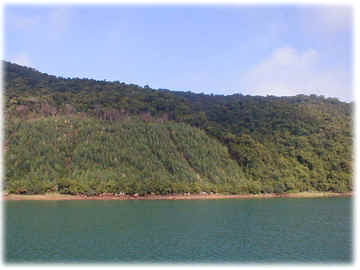
- observing and mapping major vegetation types within the reserve
- carrying out detailed survey work on vascular plants within vegetation plots in each major vegetation type
- compiling a species list for vascular plants of the reserve
- supplementing the vegetation survey by carrying out opportunistic botanical sampling.
Socio-economic Surveys: Periodically socio-economic survey work is carried out using standardised questionnaires by the volunteer Research Assistants and the Vietnamese researchers. the location of settlements within and outside the forest are mapped. Extension methodologies such as participatory rural appraisal and standardised household questionnaires are used to determine the local pressures on the forest and the receptivity of local people to activities which are designed to reduce pressure on the forest resource, such as tree planting at village or family level.
One of the aims of the survey work is to keep local people informed of the project's activities and to try and involve them in the development of management options for the forest. In this way, the project aims to reduce potential conflict between conservation of biodiversity and local interests.
Results and Reports:
All of the data collected on the project phase is collated in a report. This report is produced in a standardised format and includes information on forest location, size, status, methods and results of the biodiversity and socio-economic surveys, and species lists. the report also includes recommendations for future management of the forest. It is distributed to the IEBR, Ministry of Forestry and other collaborators in Vietnam as well as Universities and research institutions world-wide. The Society also encourages scientists and researchers working on the project to produce papers which the Society will submit for publication in national and international journals.
Project Evaluation:
An advisory body, the Frontier Project Advisory Committee (FPAC), monitors and evaluates the technical side of the project. This advisory body consists of officials from the Ministry of Forestry, IEBR, and the Society for Environmental Exploration. The advisory board's job is facilitated by the fact that the project has clear output and project objectives with a timetable for their achievements.
What will I myself be doing?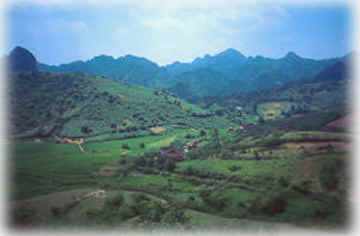
The main tasks and methods that I will be involved in are:
- biodiversity inventories
- repeat monitoring of permanent study sites
- assisting in environmental education at local schools and communities
and more specifically:
- 'distance' sampling to census large mammal populations
- natural resource assessment of forest products, medicinal plants, inland fisheries
- nocturnal crocodile surveys where appropriate, by boat on inland rivers
- mist-netting for birds and bats in suitable locations
- small mammal live trapping
- amphibian surveys and specimen collection.
Every volunteer will learn all the techniques and have an opportunity to contribute to every aspect of the work programme. In addition, they have an opportunity to specialise in a more specific part of the work, perhaps assisting one of the staff in their specialised research.
What next?
The expedition is now just 3 months away. Before then I must raise £2200 to fund my part in the project. I will be organising numerous charity events to help raise the funds. If you would like to see details upcoming events click here.
If you or your company would be interested in sponsoring my part in the expedition or donating in any way please click here. I can offer much publicity to sponsor companies both before, during and after the expedition.
[1] [2] [3] [4] [5] [6] [7] [8] [A] [B] [C] [D] [E] [F] [G] [H] [I] [J] [K] [L] [M] [N] [O] [P] [Q] [R] [S] [T] [U] [V] [W] [X] [Z]